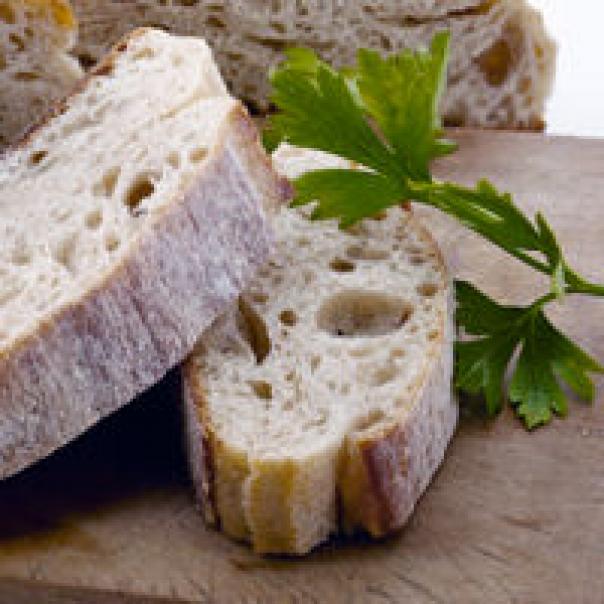
In honour of Real Bread Week (Saturday 23 February – Sunday 3 March), registered dietitian and consultant, Juliette Kellow, has debunked some of the most popular bread myths.
Myth: Carbs are bad for us
Head into the world of social media and you’d be forgiven for thinking that carbohydrates are the enemy, with many advocates recommending we ditch them in an effort to lose weight and lower our risk of type 2 diabetes.
But, while the idea may be controversial to some, health guidelines in the UK recommend we continue to put carbs firmly on the menu.
That’s not to say we should be eating mountains of white pasta, mashed potatoes and long-grain rice, instead, the key is to choose high-fibre, starchy carbs and, ideally, wholegrains.
We also need to keep a check on portion sizes, especially if we’re struggling to maintain our weight or want to lose a little. And of course, we should limit refined and sugar-laden carbs such as sugary drinks, confectionery, biscuits, cakes, muffins and doughnuts.
‘Good’ carb choices include wholemeal bread, wholewheat pasta and brown rice.
Myth: Bread is fattening
Bread isn’t the calorie fright many of us think it is – a typical medium slice of bread contains around 90kcal, while thick slices have around 130 calories. To put that into context, UK health guidelines recommend women have 2,000 calories a day and men, around 2,500 calories a day.
Instead of worrying about the bread itself, it’s more important to watch what we put with it. For instance, piling on butter or spread, dipping it into olive oil, smothering it in jam, honey or chocolate spread, or adding thick slices of cheese or mayo-laden fillings to make a sandwich, will seriously increase calories, together with fat, sugar and salt.
Myth: Bread is full of added sugar
Despite what you might have read, most bread – including white – is actually low in sugar (defined as having no more than 5g total sugars per 100g).
A typical slice of bread contains around 1-2g sugar per slice – that’s around ¼-½ teaspoon. It’s a small amount when compared with health guidelines in the UK, which recommend a maximum of 30g free sugars per day. In fact, bread provides less than 3% of the free sugars in adult diets in the UK.
Myth: Bread causes bloating
According to a report from the British Nutrition Foundation, there’s little proof that bread – or the way in which it’s produced, whether by modern or traditional methods – causes bloating or any other form of digestive discomfort in normal, healthy people.
People who suffer with conditions, such as coeliac disease, may suffer with gastrointestinal symptoms though, if they eat bread, with bloating being one of the main symptoms of undiagnosed coeliac disease.
Myth: Many of us are allergic to wheat so need to avoid bread
Studies suggest as many as 20-30% of us believe we are allergic or intolerant to one or more foods. However, it is in reality closer to 1-2%. If you suspect you have an allergy or intolerance to wheat, then it’s vital to get it diagnosed by a properly qualified health professional.
It’s important to avoid simply cutting wheat out of your diet without medical supervision – you may end up with an unbalanced diet that’s lacking in certain nutrients or you may mask another underlying health problem that needs investigating.
Myth: White bread contains no nutrients
White bread lacks the fibre of wholemeal varieties, but it still provides energy-providing carbs and a range of vitamins and minerals. White flour is fortified with calcium and iron, which means white bread contains these nutrients.
White bread is also a source of B vitamins, thiamin (B1) and niacin, which help to release the energy from food and keep the nervous system functioning normally. It also contains a nutrient called manganese, which acts as an antioxidant and so helps to protect cells from damage.
Myth: ‘Posh’ bread is better for you
It doesn’t matter whether your bread is mass produced, from an artisan bakery or made in your own kitchen – it’s all good for you.
Research has found the vitamin content of bread baked using modern techniques is very similar to bread baked using more traditional methods and this applies to both white and wholemeal breads.
In particular, making your own bread, either by hand or in a breadmaking machine, means you have complete control over the ingredients that go into your loaf. That gives you the option to make breads healthier if you want to by using wholegrain, high-fibre flours, reducing the amount of salt you add, and mixing in extra nutrient-rich ingredients such as nuts, seeds, oats or dried fruit.
Myth: Bread is hard to make
Bread is relatively easy to make as a basic loaf contains just a few key ingredients – flour, yeast, salt and water. It does tend to take a long time though from starting out to seeing the finished product as most doughs need to be left to prove a couple of times. Using a breadmaking machine though means you can make a loaf with only five minutes of your time – just pop all the ingredients into the pan, switch on the machine, leave it to mix, knead, prove and bake, then enjoy a perfectly cooked homemade loaf several hours later!